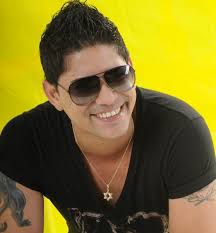13.22.3 Yoandys Lores González (Baby Lores)

Yoandys Lores González, known both artistically and publicly as Baby Lores, was born on December 27, 1983, in the city of Cienfuegos. His journey as an instrumentalist began with the study of instruments such as the guitar, bass, piano, and percussion. Today, he has become a prestigious composer, arranger, singer, and instrumentalist, and has managed to reach the top of the popularity ladder, significantly elevating the quality of Cuban reggaeton.
He began his career as a guitarist and singer in 1994 with the children’s group “Ismaelillo” from his home province. There, he completed his training as a pianist and arranger for the group. Later, he joined the group “José Miguel y su balanza,” led by the renowned Cuban musician, a former member of the prominent group Irakere.
In 2003, he began working in musical direction, composition, and arrangements with the orchestra “Mercedes y su aché.” Following that work, that same year he joined “Cubanos en la red,” where he remained for almost two years. Thanks to his talent, the group underwent a complete shift in style and repertoire, which ultimately led to a national tour and the recording of the album “Del montuno al reggaeton” (From Montuno to Reggaeton) with TCI Rapens Inc. On this latest album, Baby Lores debuted as a music producer.
In 2004, he made his debut as a director with the Salsa fusion group “La Fórmula” at the closing ceremony of the International Festival of New Latin American Cinema, where he shared the stage with César “Pupy” Pedroso and Los Que Son Son.
Baby Lores has worked as a producer with leading Cuban groups such as Gente de Zona, Acento Latino, and Eddy K, among others. One of his most significant experiences was a figure production with Eddy-K, La Freska, Bases Llenas, and Yulien Oviedo, with Sony Music at EGREM Studios (1008 3rd Street between 10th and 12th Streets, Miramar, Playa, Havana).
Already more involved in the reggaeton genre, he joined forces with another of the most followed exponents in Cuba, Leandro Medina, known as El Insurrecto, and formed the Clan 537 project. From this relationship emerged songs such as “Déjala ir”, “La caperucita”, “Más loco que tú soy yo”, “Bailarina VIP” among other national and international hits.
Shortly after, Baby Lores formed a duo with Ramón Lavado Martínez, known as El Chacal, a young man with incredible talent that people followed from the first moment.
In 2007, Baby Lores and El Chacal merged with El Insurrecto. The union of these artists was a musical sensation and took place at the Salón Rojo del Capri (21st Street between North and West, Vedado, Plaza de la Revolución, Havana) with the concert “Los Reyes del Trono.” The CD “La Resistencia” emerged from this alliance, and shortly afterward, the two disbanded, with each artist continuing their solo careers.
After returning from Europe in mid-2008, Baby Lores began working on her album, “Creo.” The CD featured an audiovisual production directed by Alejandro Pérez. This album includes songs such as “Creo,” “Mi isla bonita,” “Soñando Contigo,” and “Ya no hacemos el amor.” The music video for the latter received several nominations at the Cuban Music Video Festival “Los Premios Lucas,” including Best Video of the Year, an award that ultimately went to her former bandmate, El Insurrecto, for his song “Cerro Cerrao.” Her brother, El Bicho, and other renowned artists such as El Micha, Alexander Abreu, and Pancho Amat also participated in the recording of the album.
His current repertoire exceeds one hundred songs in various genres. He has worked with highly talented Cuban artists such as the young singer Diana Fuentes and Roldán, director of the group Orishas, with whom he recorded “Dime qué más,” which was widely acclaimed not only in Cuba but also in Europe and Latin America.
Baby Lores is currently working on her new, as yet untitled album. It’s a purely Cuban production. Maestro Pancho Amat on his tres and the renowned José Luis Cortés on his flute are involved in this work.








